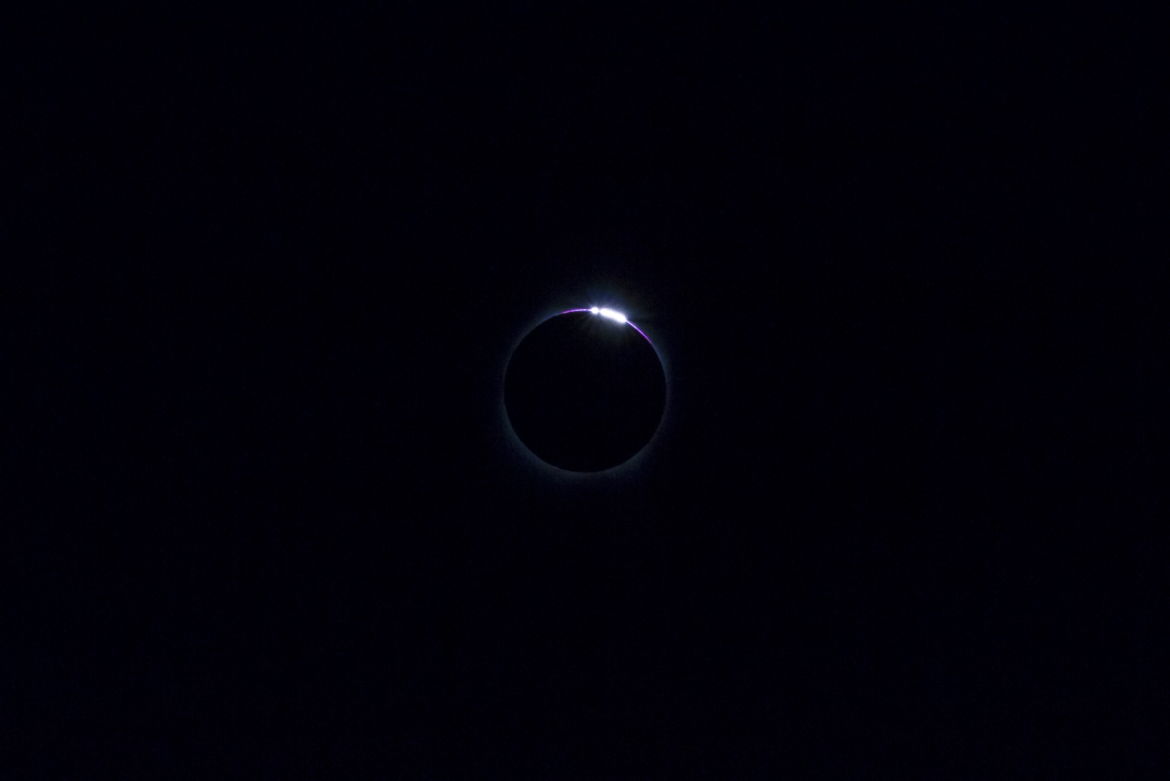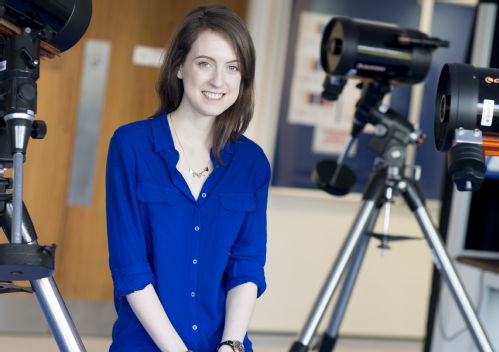Chloe Pugh
Position: PhD Student
Supervisors: Prof Valery Nakariakov, Dr Anne-Marie Broomhall
Topic: Quasi-Periodic Pulsations in Solar and Stellar Flares
Funding: ERC
Background: Master of Physics (MPhys), University of Warwick, 2014
My GitHub page: https://github.com/chloepugh
PhD thesis available here: http://wrap.warwick.ac.uk/109151/
Publications
Scaling laws of quasi-periodic pulsations in solar flares
Pugh, C. E., Broomhall, A.-M., Nakariakov, V. M. 2019, Astronomy & Astrophysics, 624, A65
Detection of a giant flare displaying quasi-periodic pulsations from a pre-main sequence M star with NGTS
Jackman, J. A. G., Wheatley, P. J., Pugh, C. E., et al. 2019, MNRAS, 482, 5553
Non-stationary quasi-periodic pulsations in solar and stellar flares
Nakariakov, V. M., Kolotkov, D. Y., Kupriyanova, E. G., Mehta, T., Pugh, C. E., Lee, D. H., Broomhall, A.-M. 2019, Plasma Physics and Controlled Fusion, 61, 014024
Ground-based detection of G star superflares with NGTS
Jackman, J. A. G., Wheatley, P. J., Pugh, C. E., et al. 2018, MNRAS, 477, 4655
Quasi-periodic pulsations in the most powerful solar flare of Cycle 24
Kolotkov, D. Y., Pugh, C. E., Broomhall, A.-M., Nakariakov, V. M. 2018, The Astrophysical Journal Letters, 858, L3
Properties of quasi-periodic pulsations in solar flares from a single active region
Pugh, C. E., Nakariakov, V. M., Broomhall, A.-M., Bogomolov, A. V., Myagkova, I. N. 2017, Astronomy & Astrophysics, 608, A101
Pugh, C. E., Broomhall, A.-M., Nakariakov, V. M. 2017, Astronomy & Astrophysics, 602, A47
Pugh, C. E., Armstrong, D. J., Nakariakov, V. M., Broomhall, A.-M. 2016, MNRAS, 459, 3659
Armstrong, D. J., Pugh, C. E., Broomhall, A.-M., Brown, D. J. A., Lund, M. N., Osborn, H. P., Pollacco, D. L. 2016, MNRAS, 455, 3110
Pugh, C. E., Nakariakov, V. M., Broomhall, A.-M. 2015, The Astrophysical Journal Letters, 813, L5
Solar cycle variations in the powers and damping rates of low-degree solar acoustic oscillations
Broomhall, A.-M., Pugh, C. E., Nakariakov, V. M. 2015, Advances in Space Research, 56, 2706
Balona, L. A, Broomhall, A.-M., Kosovichev, A. Nakariakov, V. M., Pugh, C. E., Van Doorsselaere, T. 2015, MNRAS, 450, 956
About my research
Many stars not dissimilar from the Sun have been observed to produce flares several orders of magnitude greater than any solar flare on record. Due to the potential for substantial damage in the near-Earth environment associated with powerful flares, it is important to work towards determining whether a superflare could ever occur on the Sun.
One way to help with this is the study of quasi-periodic pulsations (QPPs), which are time variations in the intensity of light emitted by a flare. Several possible mechanisms that could be responsible for the QPPs have been proposed, which fall into two categories: magnetohydrodynamic (MHD) oscillations, or self-oscillatory regimes of spontaneous magnetic reconnection. QPPs in solar flares have been widely observed, and can be used as a coronal plasma diagnostics tool. More recently, QPPs have been observed in flares on other stars, although these observations are more rare.
I am currently using data from NASA's Kepler mission to expand the sample size of known stellar QPPs, identify their periods of oscillation, and ultimately work towards modelling the flares and deducing the physical parameters of the flaring regions.
With a large sample of QPPs in stellar flares, it might be possible to infer whether the underlying physics of stellar superflares is similar to that of solar flares, and thus provide evidence as to whether a superflare could occur on the Sun.

Photo taken during the total solar eclipse on 21st August 2017 in Tennessee. The pink/purple glow is from the solar chromosphere.
Contact Details
Email:
c dot e dot pugh at warwick dot ac dot uk
Office:
PS1.07

